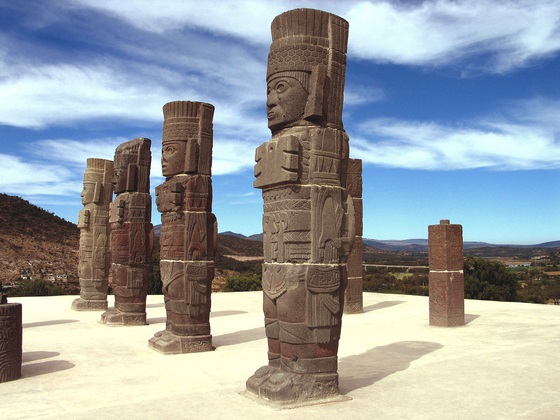

After renovation, the building opened on 5 December 1965, with Barba serving as its deputy director until 1976 as the Cultural Museum, with rooms dedicated to demonstrating cultural artifacts from around the world. Beatriz Barba and Julio César Olivé proposed that the space be converted into a museum featuring world cultures. This colonial-era building was named a national monument in 1931, but when the new Museum of Anthropology opened the site was left vacant. Much of the remaining items were transferred to the Museo Nacional de Antropología e Historia by 1964. The collection of items related to natural history was moved to the Chopo Museum in 1909, and the collection of Mexican historical items were mostly moved to the museum at the Castle of Chapultepec in 1944. While the museum was initially successful, it eventually declined and much of its collection was moved to other institutions. This mural can still be seen in the lobby. At the beginning of the 20th century, artist Rufino Tamayo painted the mural called "La Revolución" (The Revolution) in which he depicts the Mexican Revolution. In 1865, Emperor Maximilian decided to put the Public Museum of Natural History, Archeology and History here, beginning with pieces donated by the Royal and Pontifical University of Mexico and the National Museum founded by President Guadalupe Victoria in 1825. In 1850, minting operations were moved to Apartado Street, and this building was used by a number of entities such as the Engraving School, the Supreme Court, minister of the interior and government graphic design department. Colonial era mint įrames used for the Turtle and Straw Bull dances. Recently, excavations here and next door at the National Palace have unearthed parts of a wall and a basalt floor believed to be part of the Black House. Cortes’ son later inherited this palace, only to later sell it back to Felipe V in order to establish the vice-regal palace. This site was part of lands given to Hernán Cortés by the Spanish Crown as a reward for the conquest of Mexico, and Cortés rebuilt the New Palaces/Black House complex in Spanish style, using much of the building materials of the old Aztec buildings. During the Conquest, this Black House, along with the rest of Moctezuma's New Palaces was nearly destroyed.
#Culturas de mexico professional
In here, Moctezuma would meditate on what he was told by professional seers and shamans. The museum is located on the site of the original Aztec building that was a part of Moctezuma's "New Palaces" complex called the " Casa Denegrida" (Black House) by Spanish conquerors, who described it as a windowless room painted in black.


 0 kommentar(er)
0 kommentar(er)
